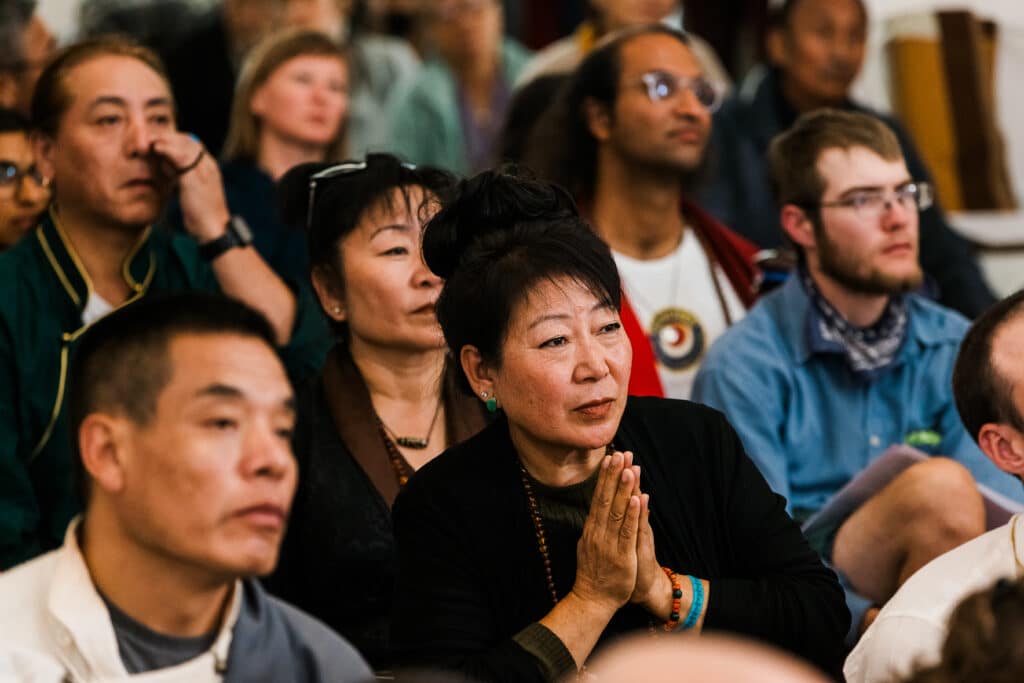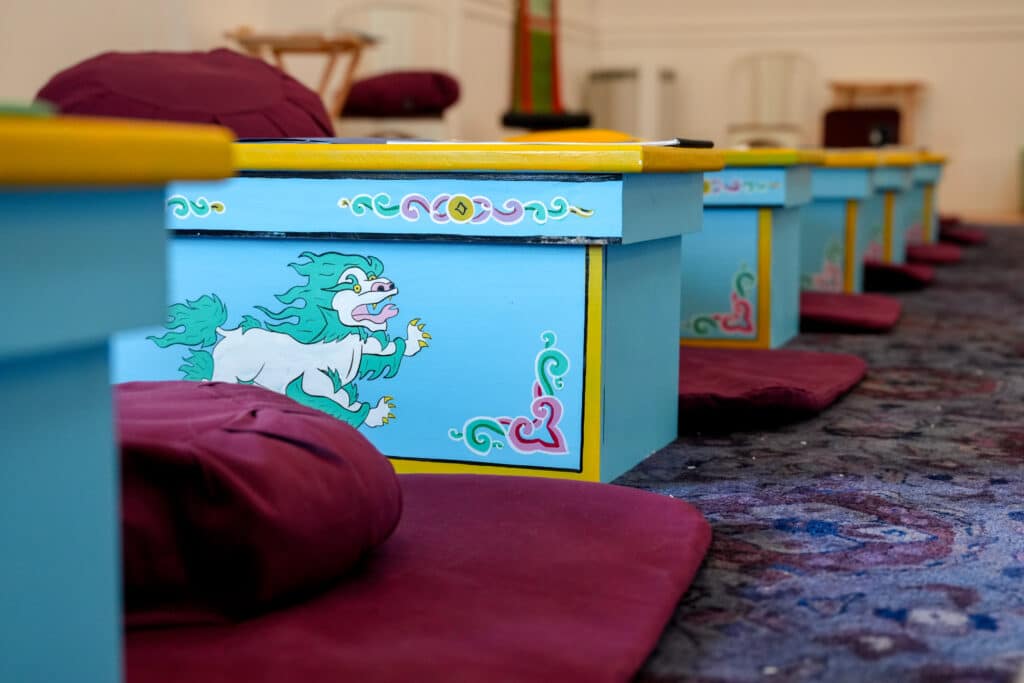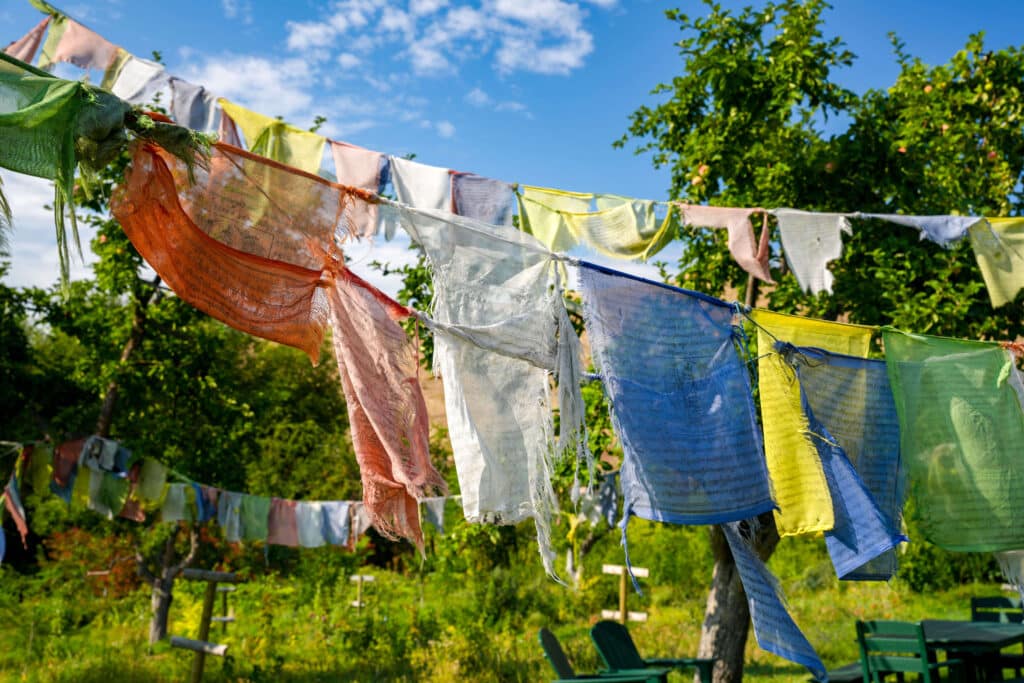With so many retreats out there, deciding which one to attend can be tough. You can go to a retreat for meditation, writing, yoga, running, and more. You could probably even find one retreat to do all of those in one week. Everyone’s schedules seem only to get busier, so it’s important to make the most of your time by choosing the best retreat for you. To help you evaluate, we’ve compiled a list of nine common misconceptions about our Namchak retreats, with explanations.

Misconception 1: I’ll be spending the entire retreat in meditation.
Some retreats have more meditation than others, but usually there will be a teaching from Lama Tsomo or Khen Rinpoche, time to practice what was taught, then time to discuss the teachings and practices. In Tibetan tradition, students were given extensive instruction on a practice, then were then sent off to meditate in a cave for days. Our goal is to give you a thorough understanding of the practice so that you can dive in once the weekend is over – no cave required.
Misconception 2: I’ll have to participate in group discussions.
If you’re the type of student who feels nervous about being called on, don’t worry. We won’t put you on the spot! Group discussions are meant to provide connection, support, and depth of knowledge. Every participant has the option to share at whatever level they are comfortable.
Misconception 3: Vipassana retreats will be spent in total silence.
There are various types of Vipassana retreats. Namchak Vipassana retreats don’t include spending the entire time in silence. Of course, we are silent during actual meditation, but there will be discussions and socializing between teachings.
Misconception 4: I’ll be around people the entire time I’m at retreat.
There are multiple breaks throughout the retreat when you can socialize or spend time alone. We usually take a long lunch break (1.5-2 hours), so you have time to be alone or with others. If there are group activities outside of retreat time, they are completely optional. We understand that sometimes a break from socializing is necessary.
Misconception 5: I have to be able to sit on a meditation cushion for hours in order to attend a retreat.
We encourage people to sit in whatever fashion works for them, as learning while you’re uncomfortable isn’t ideal. There will be chairs as well as cushions to sit on. You’re welcome to choose what works for you and switch at any time.
Misconception 6: I need to be Buddhist to attend a retreat.
Practicing meditation doesn’t require one to be Buddhist. Our retreats are open to anyone who wants to cultivate peace and awareness while learning traditional Tibetan practices.
Misconception 7: I should have extensive knowledge about Tibetan Buddhist meditation practices before attending a Namchak retreat.
The great part about a retreat is the opportunity to learn something new or expand your knowledge in a supportive community. You should closely read retreat descriptions, as different levels of meditation practice are helpful for different retreats. However, you don’t need to be a master practitioner to attend a retreat. Knowing the teachings beforehand would take the fun out of it! If you’ve been practicing for a while, revisiting foundational practices is always beneficial. At a retreat you’ll learn while having access to a practitioner who can answer your questions.

Misconception 8: Meditation retreats are expensive.
We do our best to make retreats accessible to all, regardless of their ability to pay. There are price options for every retreat, including a work-study option. We also strive to make retreats accessible for those with families, so childcare stipends are available. If you would like to discuss pricing, the work-study option, or a childcare stipend for a specific retreat, please email info@namchak.org.
Misconception 9: I will be on my own after the retreat.
After retreats, we provide participants a few follow-up video chats with Lama Tsomo or Khen Rinpoche per year. During follow-up calls, the teacher checks in on how students are doing with retreat material, and opens it up for questions and concerns. The follow-up calls also allow students to reconnect with one another.
In addition to follow-up video chats, Lama Tsomo leads a Meditation Coaching Call most months of the year. Anyone can sign up online and call in to these video chats. Lama Tsomo opens these chats for students to ask questions about their practice. Check out this link for more info on upcoming Meditation Coaching Calls.
Most importantly, we want participants to benefit from our retreats. If you’re feeling social, you’re welcome to socialize as much as possible. If you feel like soaking in the teachings quietly and on your own, that’s fine, too. There’s no one way to do retreats. We want people to be comfortable so that they get the most out of their retreat. We know that will look different for each participant.
If you’ve been wanting to come to a retreat but are putting it off, we encourage you to ask yourself why. If you have questions or concerns that we can address, please let us know. If you have a question, someone else probably does too. So there’s no harm in asking! Send your questions to info@namchak.org and we will gladly address them.
Click here to read about our upcoming retreats.
See you soon!
Published on Sep 26 09 : 00 am




